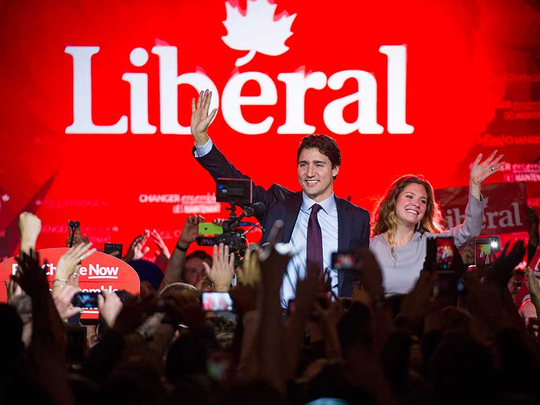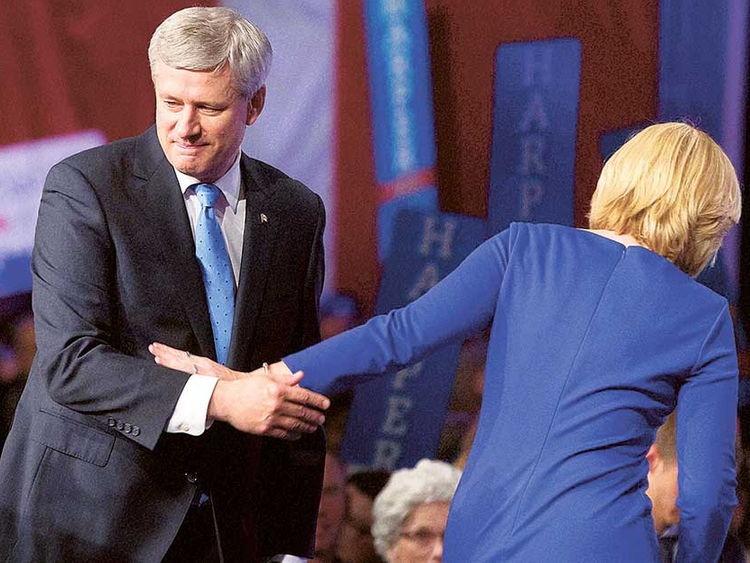
MONTREAL: The long Canadian election campaign was supposed to highlight just how inexperienced Liberal leader Justin Trudeau was and give the ruling Conservatives an ample supply of gaffes to use in attack ads.
The gambit underestimated Trudeau, the 43-year-old son of charismatic former Prime Minister Pierre Trudeau, and, by setting expectations so low, may have helped him instead.
Trudeau’s Liberals will form Canada’s next government after defeating Conservative Prime Minister Stephen Harper on Monday.
“I think the Conservative advertising ultimately has backfired,” said Liberal candidate Kevin Lamoureux. “He’s more than met the expectations that people had of him.” The seeds of the Liberal victory were sown in July, when the party ran third in polls behind the left-leaning New Democratic Party and the Conservatives.
Before the campaign began on August 2, Liberal strategists said Trudeau was being advised to go negative to counter the bruising Conservative ads that he was “just not ready”. But his inner circle, including campaign co-chairs Katie Telford and Dan Gagnier, principal adviser Gerald Butts, and chief of staff Cyrus Reporter, backed Trudeau’s position that they should focus on the positive, as they see it.
“We were not surprised by the negative ads. It wasn’t a new thing. But Justin Trudeau’s optimistic high-road approach struck a chord,” said Chrystia Freeland, a Liberal member of parliament.
The strategy was to portray a sunny personality through ads, speeches and personal contact with ordinary people.
Trudeau, who considers himself “a learned extrovert”, spent half his time at campaign stops milling through crowds and posing for selfies. Most of those pictures made their way onto Facebook, Instagram and other social media where they were reposted or retweeted for a multiplier effect.
By August, the Liberals were largely indistinguishable from the NDP in their appeal to centre-left voters and the three main parties were running neck-and-neck.
A dearth of major economic policies had helped NDP leader Thomas Mulcair eat into Liberal support as he laid out policies on cheap daycare and a C$15 minimum wage for federally regulated workers.
At a meeting in June, the party realised its plan to balance the budget and spend on infrastructure, while enriching the overall tax package for the middle class, was no longer viable as the fiscal picture worsened on weaker oil prices, two senior Liberals familiar with the discussion said.
They would probably have to go into deficit or scale back their promises. A final decision was not made until August, the two Liberal sources said.
Some had advocated running big deficits — as much as C$40 billion (Dh113 billion) or C$50 billion, similar to the levels the Conservative government ran in response to the 2007-09 financial crisis — but they settled for a deficit of up to C$10 billion a year for three years, a third senior Liberal said.
“As of that moment, I think it became clear that we were the party of real change and that Stephen Harper and Tom Mulcair were two peas in a pod on the economy,” said veteran Liberal legislator John McCallum, a former bank chief economist.













